A Day in the Life: Pastoral Care Ministry
June 8, 2019It is over twelve months since I left North Sydney, New South Wales and started my ministry in the St Mary of the Cross MacKillop – Northern Light Parish in South Australia.
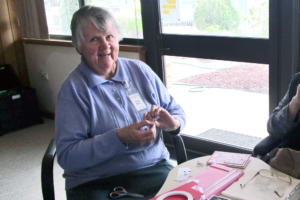 The parish spans from Nuriootpa to Port Wakefield. I live at Hamley Bridge which is very central and anything from thirty to forty kilometres from home. We have eight Mass centres and have Mass twice a month and Liturgy of the Word with communion on the other Sundays. The lay people lead these sessions.
The parish spans from Nuriootpa to Port Wakefield. I live at Hamley Bridge which is very central and anything from thirty to forty kilometres from home. We have eight Mass centres and have Mass twice a month and Liturgy of the Word with communion on the other Sundays. The lay people lead these sessions.
I do visiting in the different towns. On a Tuesday I go to the Hospital – Nursing Home here at Hamley. Here I participate in the activities: craft, cooking, sing-alongs, scrapbooking and card making. The cards are a great hit with the residents. We see the delight on their faces as they achieve something they can share with the nurses as they go back to their rooms. The best of these days is the interaction and laughs they receive from each other. Shrove Tuesday was a pancake making afternoon. “They were the best pancakes we have had.” some of them said.
We have a Mass once a month and it is Ecumenical. I have had the privilege of leading these when Father Mark is away.
When I first went there they asked what to call me and I said “Maria is fine.” However someone said that Sr Maria sounds much nicer, so that is what I am.
I have been to a funeral of a resident with the staff. I was also invited on a bus trip to Tanunda to hear and see the pipe organ they have restored.
I also join the Kapunda ladies for a lunch each month when they get together. They are a great group. I have also been invited to talk on Mary MacKillop at a family gathering. It is a great parish and I am very lucky to be part of it.
Maria Hennekam rsj
Carrying on the Legacy
Carrying on the legacy of Australia’s first Saint.
Sister Kathy shares her story with Mary MacKillop Today about working with some of the most vulnerable and remote communities in Papua New Guinea and Timor-Leste.
Saint Mary MacKillop believed in the power of education to lift communities out of poverty.
At Mary MacKillop Today, we are inspired by Australia’s first Saint to empower vulnerable people to realise their dignity through education, health and sustainable livelihoods. We work with communities in Australia and overseas, in Timor-Leste, Peru, Papua New Guinea and Fiji.
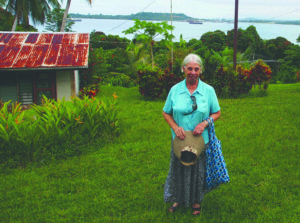 A dedicated member of our team, Sister Kathy, has an inspiring story to tell. She has spent twenty years living in Papua New Guinea and, more recently, two years in Timor-Leste.
A dedicated member of our team, Sister Kathy, has an inspiring story to tell. She has spent twenty years living in Papua New Guinea and, more recently, two years in Timor-Leste.
Sister Kathy shared how she made the move between the two developing countries:
Sister Kathy is an incredibly resilient person. She wasn’t deterred by the shocking living conditions – she was motivated to get to work and overcome challenges.
It wasn’t long before Sister Kathy gained the confidence and the local know-how to connect with communities. One of our favourite things to hear her talk about is her outings with our Mobile Learning Centre – a colourful bus that travels to some of the most remote areas of Timor-Leste visiting schools, orphanages and disability centres. It’s filled with creative tools such as puppets and musical instruments to teach kids literacy and numeracy through fun workshops.
It is a slow process, taking many visits to the community but at the end of the process the children from this group are ready for “big school” and some dedicated community members have been trained how to continue this “ready for school work”, while the Mobile Learning Centre moves to begin again in another remote community.
Continue reading the article below:
Carrying on the Legacy of Australia's first Saint
Article and photo provided by Mary MacKillop Today. Used with permission.
A New Rule for a New Time
Father Julian Woods: A New Rule for a New Time.
Today, as I reflected on a recent message I received from Sr Monica, I found myself looking back over the past 160 years to Julian Woods as a young priest in charge of one of the most isolated parishes in South Australia. His bishop had commanded all his priests to raise the powers of love by establishing schools for the local catholic children. For Julian this seemed impossible, that is, until he came to the extraordinary decision to found a new religious order of women like one he had seen in France.
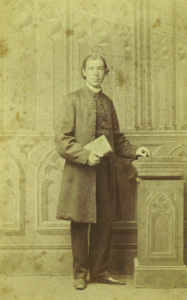
He trusted absolutely in God’s Providence and the story of his order’s beginnings is remarkable indeed. Within a short time, his bishop approved his plans and moved him to Adelaide as Director of Catholic Education for the diocese. He needed his Sisters, but he felt that they could not come without a formal structure. The outcome was his Rules of the Institute of St Joseph for the Catholic Education of Poor Children.[1]
There is much of value in this document, written as it is in the language and theology of the nineteenth century and, even though it bears signs of having been written in haste, Julian’s message is the same. A Sister of St Joseph is called to act whenever she sees an evil—to raise the powers of love in every needy situation she encounters.
Julian began by stating that the Sisters’ principal mission was the education of children whose parents [were] in humble circumstances, but that they must also reach out to orphans and destitute persons. How? By being poor and humble and considering [themselves] the least among all religious orders; giving themselves wholly to God; living in houses which were absolutely without revenue and [deriving] their support from either the Schools, the Institutions over which [they had] charge, or from alms. These houses were to be very poor with fittings such as poor people used. Likewise, their habits were to be made of the cheapest brown material available.[2]
They were to take four vows, poverty, chastity and obedience and one to do all in their power to promote the love of Jesus, Mary and Joseph in the hearts of little children. Those sisters engaged in teaching were to:
In community the Sisters were to make a constant effort to
One of his strongest concluding statements read that Sisters must
Much more lies hidden among fine detail regarding the Sisters’ way of life and their ministries. Mary MacKillop herself commented that their Rule contained many treasures, which were very dear to the Sisters[6] but that there were some sections which, to use her words,
Others dealt with minute household employments which did not suit all places,[8] while the most problematic section was that relating to its governance for it did not clearly convey the ideas of the Founder or the wishes of the Sisterhood.[9]
Roman authorities gave the Institute a formal constitution, but Mary did not allow the treasures from Julian’s Rule to be lost. She enshrined them in her Rules for the General Guidance of the Sisters of St Joseph of the Sacred Heart, which was first published in 1883, and her Book of Instructions which appeared in 1906.
While both the world and the Congregation have changed markedly since 1867 we Sisters of St Joseph still strive to raise the powers of love by reaching out to people in need as Julian instructed us to do so long ago.
Sr Marie Foale
Footnotes:
[1] Julian E.T. Woods, “Rules of the Institute of St Joseph for the Catholic Education of Poor Children,” Article 1, December 1867, in Resource Material from the Archives of the Sisters of St Joseph of the Sacred Heart, Issue No. 3, Sesquicentenary Edition, December 2016, p. 1
[2] Julian, Rules, Articles 1-3.
[3] Julian, Rules, Article 6.
[4] Julian, Rules, Article 13.
[5] As above, Article 13.
[6] Mary MacKillop, “Mother Mary’s Observations on the Original Rule”, Rome, 18 May1873, in Resource Material from the Archives of the Sisters of St Joseph of the Sacred Heart, Issue No. 3, Sesquicentenary Edition, December 2016, pp.40-42
[7] Mother Mary’s Observations, p. 40, Article four
[8] As above, page 40, Articles five & six.
[9] As above, page 41, Article ten.
Fr Julian: Man of Words – Letter Five
June 7, 2019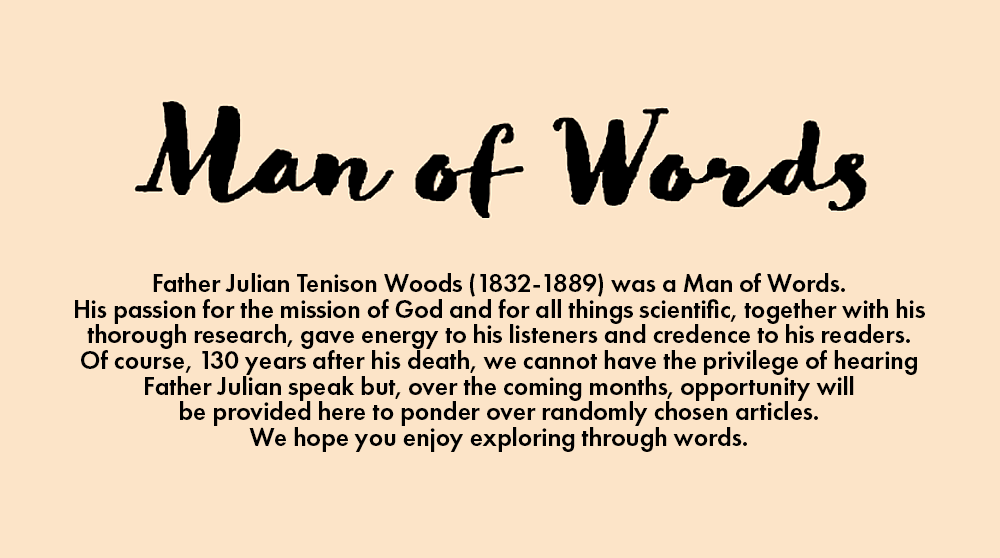
This month’s contribution is a tribute to the friendship between Father Julian Tenison Woods and Adam Lindsay Gordon, Australian poet, jockey, police officer and politician. Gordon died, at the age of 36, on 24 June 1870 in Melbourne.
Father Julian Tenison Woods met Adam Lindsay Gordon in 1857 on one of his first trips out from Penola riding from station to station across his huge, scattered parish. At that time Gordon was a horse-breaker on a station near Guichen Bay. The two shared a love of poetry and the classics and often rode together reciting to each other. They seemed to find in each other a kindred spirit based on literary enjoyment and entertainment. Woods lent Gordon books from his collection.
Year of Indigenous Languages: French and Swahili
The United Nations has declared 2019 as the International Year of Indigenous Languages. To celebrate, for each month this year, you’re invited to view greetings for different languages.
 For June, we feature the languages French and Swahili:
For June, we feature the languages French and Swahili:
French
Traditional New Year’s Day Blessing:
Seigneur, nous te remercions pour l’année écoulée et nous t’offrons la nouvelle année. Je te rends grâce pour mes enfants et petits-enfants. Garde-les dans ton amour et révèle-leur ton visage de joie et de miséricorde. Que le Père, le Fils et l’Esprit vous bénissent maintenant et à jamais. – Lord we thank you for the year past, and we offer you the new year. I thank you for my children and grandchildren. Keep them in Your love and show them your face of joy and mercy. May the Father , the son and the Spirit bless you now and forever. Amen.
Swahili (Kiswahili)
Habari za siku nyingi? – What is the news of many days?
To find out more on the International Year of Indigenous Languages, visit their website below:
The International Year of Indigenous Languages
Image Elephant Herd Tanzania obtained from Max Pixel. Used with permission.
Mary’s Words Still Inspiring Us!
June 6, 2019 Over many months, as we have pondered Val DeBrenni’s Stations of the Cross: a Journey with Saint Mary of the Cross MacKillop, we have reflected on the parallel journeys of Jesus and Mary MacKillop, and how their Way of the Cross can inspire and shape our own lives.
Over many months, as we have pondered Val DeBrenni’s Stations of the Cross: a Journey with Saint Mary of the Cross MacKillop, we have reflected on the parallel journeys of Jesus and Mary MacKillop, and how their Way of the Cross can inspire and shape our own lives.
Last month, in our final reflection on this particular journey, we reflected on the Easter story, and how Mary MacKillop has shown us what it means to live in the light of Jesus’ Resurrection.
This month, as we turn to a new source of inspiration, we invite you to embark on a new odyssey! In the coming months, we shall mine Sue and Leo Kane’s The Little Brown Book Too, for the gold that they have discovered through reflecting upon snippets of letters penned by Mary, and recognising that her words, written so many years ago, can inspire us again and again in our everyday lives.
Listen to the Voice of Sophia
June 4, 2019Elaine Wainwright focuses on Sophia’s song of delight in creation in Proverbs 8:22-31.
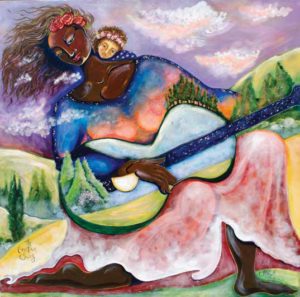 We seldom hear readings from the Book of Proverbs in our liturgies. We’re familiar with the Pentateuch, the first five books of the Bible — Genesis, Exodus, Leviticus, Numbers and Deuteronomy, and the historical Narratives — from Joshua to the Books of the Kings. We pray the Psalms regularly which are part of the third segment of the Bible — Wisdom Literature. But it is rare to hear readings from other books in the Wisdom collection.
We seldom hear readings from the Book of Proverbs in our liturgies. We’re familiar with the Pentateuch, the first five books of the Bible — Genesis, Exodus, Leviticus, Numbers and Deuteronomy, and the historical Narratives — from Joshua to the Books of the Kings. We pray the Psalms regularly which are part of the third segment of the Bible — Wisdom Literature. But it is rare to hear readings from other books in the Wisdom collection.
The extract from Proverbs 8:22-31 is not typical of the maxims or proverbs that give the book its name. Rather it is a song of praise in the voice of Sophia/Wisdom of the one who created and shapes the universe. Sophia sings she is there — caught up in the creative activity as the foundations are laid down. “I was by your side”, she says to the divine one, “a unique craftswoman”…
Continue reading the article below:
Tui Motu Issue 238, June 2019 (PDF)
Elaine Wainwright is a biblical scholar specialising in eco-feminist interpretation and is currently writing a Wisdom Commentary on Matthew’s Gospel.
Painting: The Creation Song by Shiloh Sophia McCloud © Used with permission.www.shilohsophiastudios.com
Ascension of Jesus
June 2, 2019As the flames leapt into the sky and smoke billowed out of the Notre Dame Cathedral in Paris people stood looking on in shock, disbelief and grief.
Something of the story of this significant and historic building was changing. The response from around the world is extremely generous. The Yellow Vests have been demonstrating sometimes peacefully and other times violently to draw attention to their low wages and struggle to live an acceptable standard of living. What happened to their actions and voices?
Would it be fair to say that the latest bombings and subsequent killings creating fear and chaos in Sri Lanka were incited by warped Idealism?
The incarceration of Cardinal Pell and other Clerics has disturbed the foundations of our Australian Church. What needs to change? If we want changes what role am I prepared to take on? How do I advocate for change in a way that is non-violent and respectful of the rights and views of others?
The story of the Ascension left the disciples standing looking on in confusion and possibly grief if not disbelief. Donal Nearly sj writes:
How can we as mature, educated adults respond as they did?
From a Sacred Space Reading; “Heaven is not a place at all. It is our definitive relationship with God, just as hell is the eternal severing of that relationship. ‘Heaven’ is where God is; and to be with God is to be ‘in heaven’”
 Jesus gave the disciples their mission to go out beyond the familiar and comfortable to other spaces where there is difference and challenge. Is it time now for the laity to break out of a passive state induced by our acceptance of rule by clericalism in an institutional Church that is crumbling?
Jesus gave the disciples their mission to go out beyond the familiar and comfortable to other spaces where there is difference and challenge. Is it time now for the laity to break out of a passive state induced by our acceptance of rule by clericalism in an institutional Church that is crumbling?
Is it a time for healing, compassion, gentleness and tenderness as the Pope continues to appeal to us?
Richard Rohr in a reflection on the Ascension speaks of the nine days after the Ascension. Nine days of space and of absence, that ‘alone’ time, allowing the divine Spirit within room to stretch and act.
No longer alone, the gifts of the Divine Spirit enable the action that is needed to bring about harmony, healing and wholeness. It requires a taking of personal responsibility for bringing this about, as it took the courage of the disciples to spread the Good News, the voices of the Yellow Shirts to speak up for the poor, the courage of a 15-year-old Greta Thunberg to challenge the leaders of the world to care for Earth.
How long will the transformation take?
Alma Cabassi rsj
Photo by Motoki Tonn obtained on Unsplash. Used with permission.
